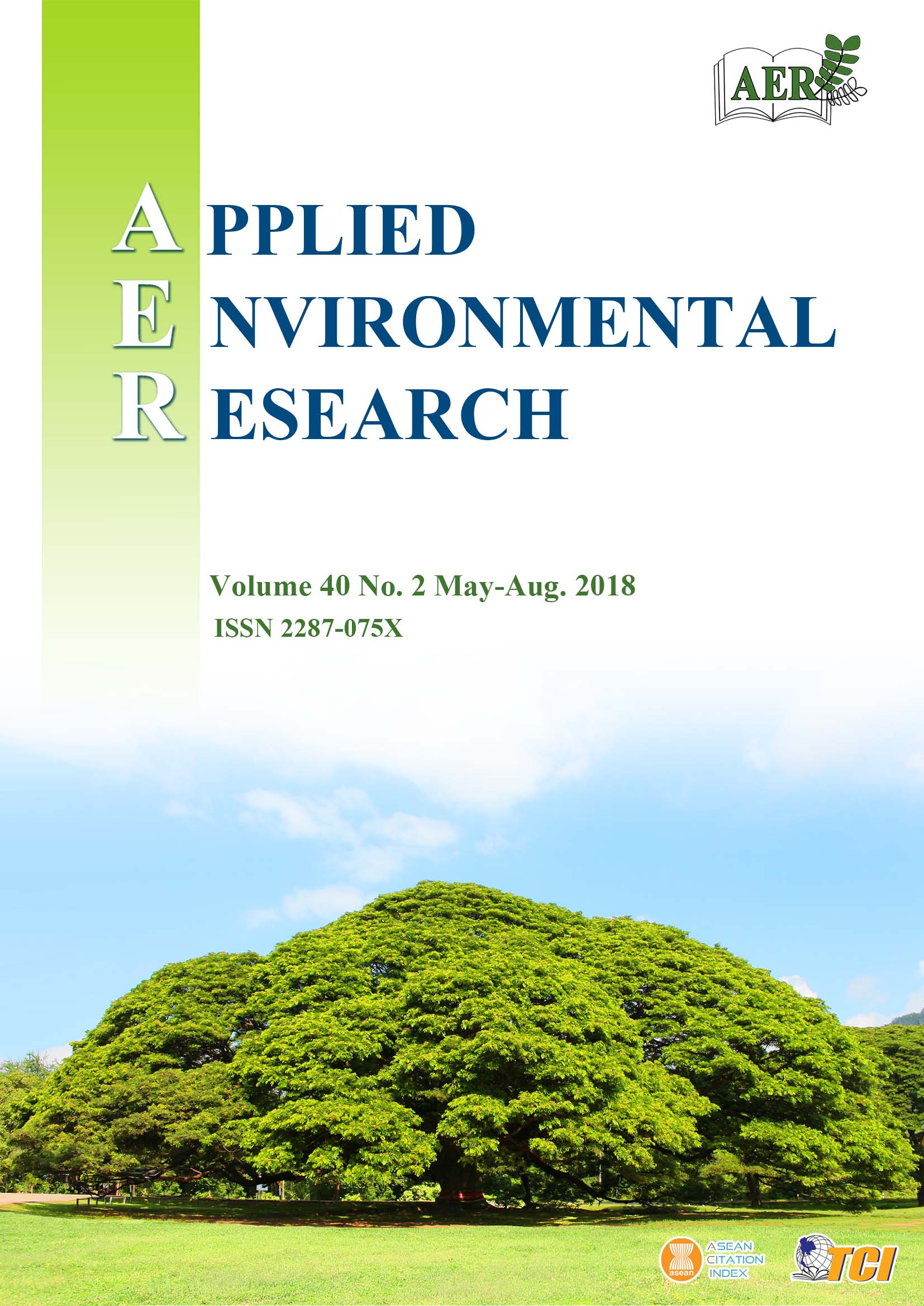Nutrient Removal Performance on Domestic Wastewater Treatment Plants (Full Scale System) between Tropical Humid and Cold Climates
Main Article Content
Abstract
Two full scale systems of oxidation ditches for domestic wastewater treatment plants (WWTP) were used as study sites: Phuket Province, southern Thailand (representative of tropical humid climates) and Plum Creek, Castle Rock, Colorado, USA (representative of cold climates). The treatment systems at both sites were designed for biological nutrient removal (BNR) from extended activated sludge. Nitrogen is removed by nitrification-denitrification processes. The solid retention time (SRT) for both treatment plants was ≥ 10 d as recommended by theory for complete nitrification in activated sludge wastewater treatment plants. Influents and effluents from these sites were compared in respect to flow rate, biochemical oxygen demand (BOD), organic nitrogen, ammonium, nitrate, total nitrogen, and phosphorus concentrations. At both sites, nutrient removal reached more than 75 % because there was sufficient carbon for denitrifying and phosphate accumulating organisms. Furthermore, low dissolved oxygen concentration, long SRT, and high temperature could be key factors to promote activity of some groups of bacteria in consuming organic matter and nutrients in wastewater in warm climates. For this reason, plant design and operating procedures for wastewater treatment in cold climates might not be always be applicable to warm climates.
Article Details

This work is licensed under a Creative Commons Attribution-NonCommercial 4.0 International License.
Published articles are under the copyright of the Applied Environmental Research effective when the article is accepted for publication thus granting Applied Environmental Research all rights for the work so that both parties may be protected from the consequences of unauthorized use. Partially or totally publication of an article elsewhere is possible only after the consent from the editors.
